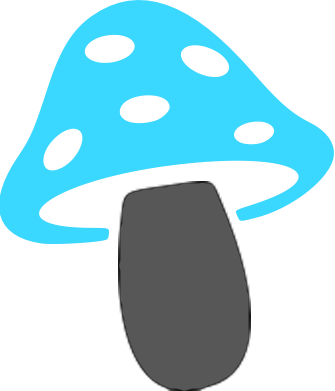Magic Mushrooms - The Fascinating World of Psychoactive Fungi
Mushrooms are a fascinating topic that sparks great interest in both leisure culture and science. These fungi, known for their psychoactive effects, have a long history and offer exciting possibilities for self-discovery and healing. In this blog, you'll learn all about the chemical properties, effects, and safe use of mushrooms. Read on and dive into the world of these extraordinary fungi!

What Are Magic Mushrooms?
Mushrooms, or psilocybin-containing fungi, are species of fungi that contain psychoactive substances such as psilocybin and psilocin. These compounds affect the central nervous system and can lead to altered perceptions, emotions, and states of consciousness. Popular genera such as Psilocybe and Panaeolus play a central role in this.
The use of these mushrooms dates back to ancient cultures, where they were used in rituals, religious ceremonies, and healing practices. Today, mushrooms are utilized in both leisure culture and therapeutic research.
Chemical Composition and Psychoactive Substances
Mushrooms primarily contain the following compounds:
- Psilocybin: The main psychoactive substance that is converted into psilocin in the body. Psilocybin is known for its powerful effects on consciousness.
- Psilocin: Binds to the 5-HT2A serotonin receptors and causes typical hallucinogenic effects such as visual and auditory hallucinations and an altered sense of time.
- Baeocystin and norbaeocystin: Lesser-known compounds that may also have psychoactive properties, though they are not yet fully researched.
- Aeruginascin: Another psychoactive compound, often present in smaller amounts, that may have milder effects.
These substances belong to the tryptamine alkaloids, which structurally resemble serotonin and bind to similar receptors in the brain.

Difference Between Mushrooms and Truffles
Both mushrooms and truffles contain psychoactive substances such as psilocybin and psilocin, but they differ in origin and composition:
- Origin: Mushrooms are the fruiting bodies of certain fungi, while truffles (or sclerotia) are underground storage structures of the same fungi. Truffles develop as a survival mechanism under unfavorable conditions.
- Chemical Composition: Although both contain psilocybin and psilocin, the concentration of these substances can vary between mushrooms and truffles. Truffles often have a slightly lower potency than mushrooms, making them more suitable for beginners.
- Legal Status: In many countries, including the Netherlands, mushrooms are illegal, while truffles are legally available. However, in the Netherlands, it is permitted to sell growkits containing mycelium, allowing individuals to cultivate their own mushrooms.
Both offer similar experiences, but truffles are often seen as a more accessible and safer alternative due to their milder effects and legal status.
Effects of Mushrooms
The effects of mushrooms depend on the dosage, individual condition, and environment. Common effects include:
- Altered perception of time and space
- Intense colors and patterns
- Emotional highs and lows
- Auditory and visual hallucinations
- Mystical and spiritual experiences
These substances work by activating the 5-HT2A receptors in the brain, which are responsible for altered perceptions. Many users report profound insights and a heightened sense of connection with nature and others.
Specific Sensory Effects: Users often experience vivid visual hallucinations, such as moving or pulsating patterns, intensified colors, and an apparent blending of objects. Auditory hallucinations often include distorted sounds, echoes, or the perception of non-existent noises. These sensory effects contribute to a significantly altered sense of reality.
Emotional Effects: Mushrooms can evoke intense emotional reactions, ranging from extreme euphoria to deep introspective sadness. Many users report feelings of enlightenment or profound connection with others and the environment. Negative experiences, such as anxiety or confusion, often occur in an unsafe environment or with excessively high doses.
The Importance of Set and Setting: Mental state (set) and environment (setting) play a crucial role in the experience. A positive mental state and a supportive environment can greatly enhance the experience, while stress or an unsuitable setting can amplify negative effects.
At higher doses, however, negative effects such as anxiety, confusion, or so-called "bad trips" can also occur. Careful preparation is therefore essential.
History and Cultural Significance
Mushrooms have been used for thousands of years in religious and spiritual contexts. In pre-Columbian cultures such as those in Mexico, they played a central role in rituals and ceremonies. Stone reliefs and sculptures highlight their importance in Mayan and Aztec cultures, where they were seen as sacred tools for communicating with the gods.
In the 1950s, psilocybin and mushrooms were rediscovered by Western scientists like R. Gordon Wasson, leading to a surge of interest in psychedelic substances. Today, mushrooms are experiencing a renaissance, both in therapeutic research and leisure culture.
Health Risks and Safety
Although mushrooms are generally considered relatively safe, there are potential risks:
- Psychological Risks: Bad trips, flashbacks, and psychological stress, especially for individuals with pre-existing mental health conditions.
- Physical Risks: Nausea, vomiting, dizziness, and, in rare cases, circulatory issues.
- Poisoning Risk: Confusing edible mushrooms with toxic varieties such as the death cap (Amanita phalloides) can be life-threatening.
A safe environment, a positive mental state ("set"), and a comfortable setting ("setting") are essential to minimize negative experiences.
Mushroom Growkits
Growkits provide a legal way to cultivate mushrooms in the Netherlands. Our high-quality Mushroom Growkits include everything you need for a successful harvest. They are easy to use and contain no active substances, making them legal to sell.
The most popular mushroom strains you can cultivate with our Growkits are:
- Golden Teacher: Known for its insightful effects, this strain is perfect for beginners.
- McKennaii: Named after renowned psychonaut Terence McKenna, famous for its intense visual effects and spiritual experiences.
- High Hawaiian: This strain offers a powerful and euphoric experience and is appreciated for its high potency.
With a Growkit, you can easily and safely cultivate different mushroom strains. Our detailed guides ensure the best results.
Frequently Asked Questions About Mushrooms
How Do I Dose Mushrooms Correctly?
The right dosage depends on your experience and tolerance. Beginners are advised to start with a low dose of 1-2 grams of dried mushrooms. Experienced users may take up to 3-5 grams but should proceed with caution.
How Do I Dry Mushrooms?
To dry mushrooms, place them in a dark, well-ventilated area. You can also use a food dehydrator to dry them evenly and maintain their quality.
Where Can I Buy Mushrooms?
You can order spores and Growkits from our Paddoshop. Our products guarantee the highest quality and ease of use.
Conclusion and Next Steps
Mushrooms are a fascinating and complex subject with both cultural and scientific relevance. From their chemical composition and diverse effects to their cultural history, these fungi offer numerous opportunities for further exploration.
Are you interested in growing mushrooms? Check out our high-quality Mushroom Growkits. With our products and guides, you can safely and easily explore the world of mushrooms.










